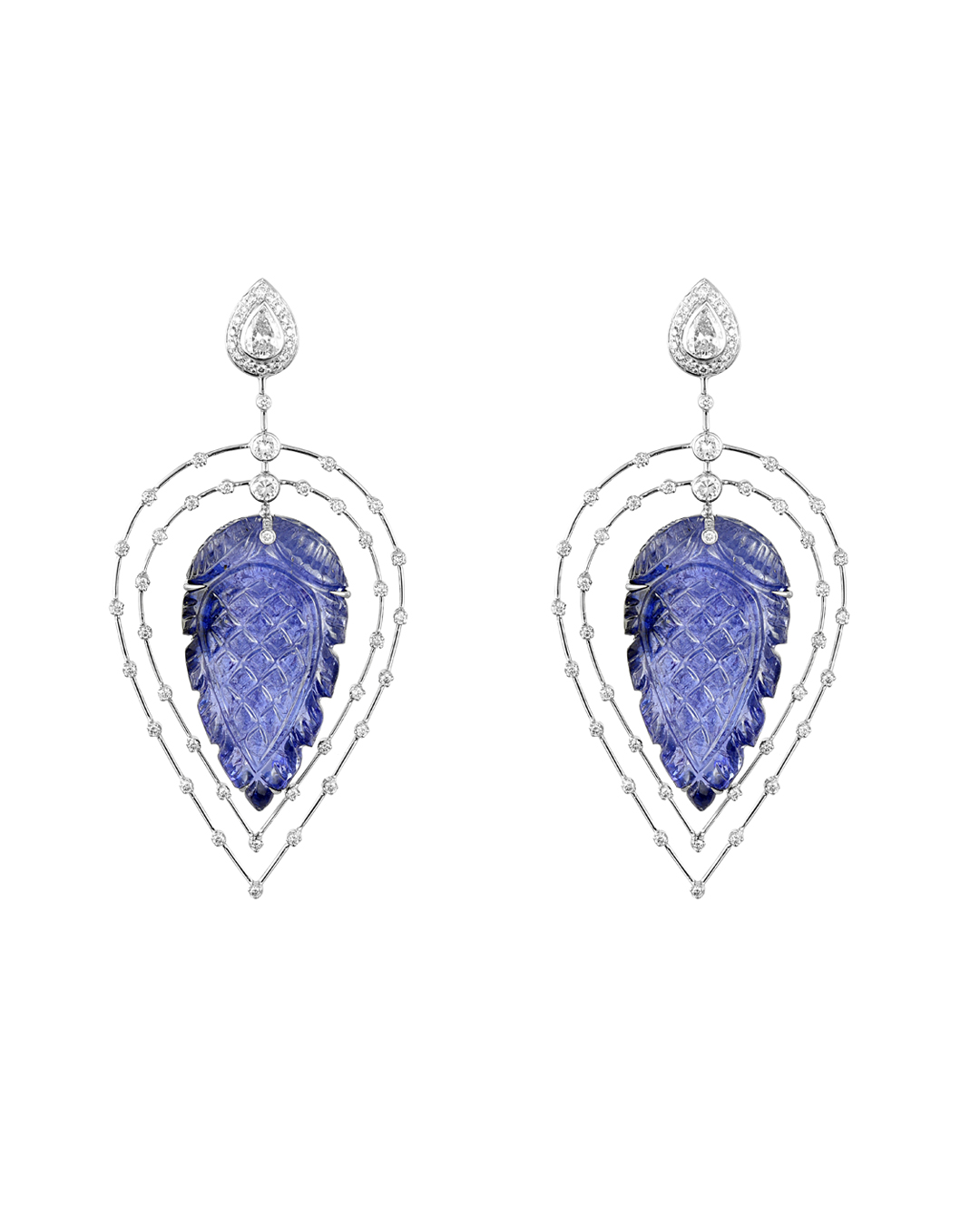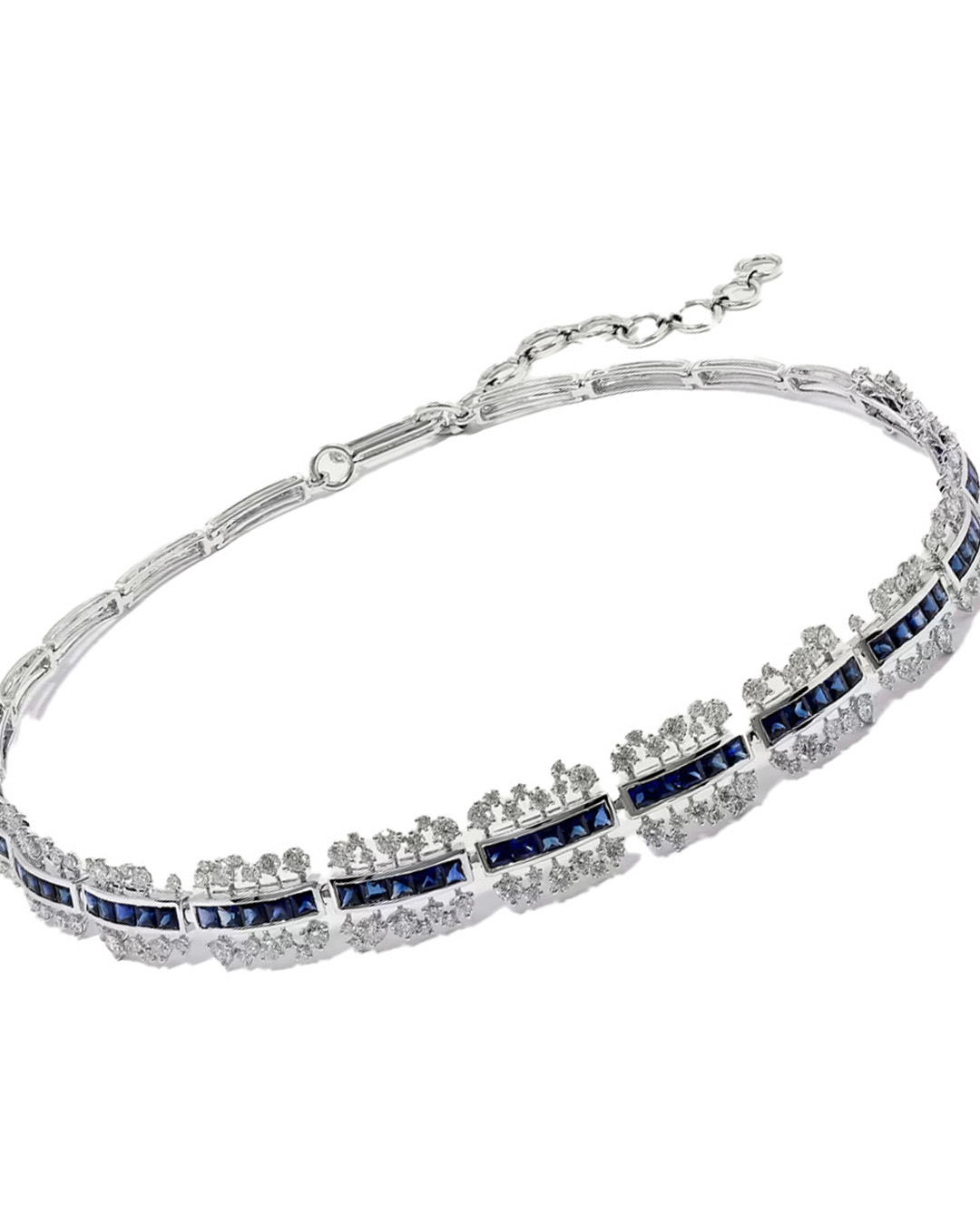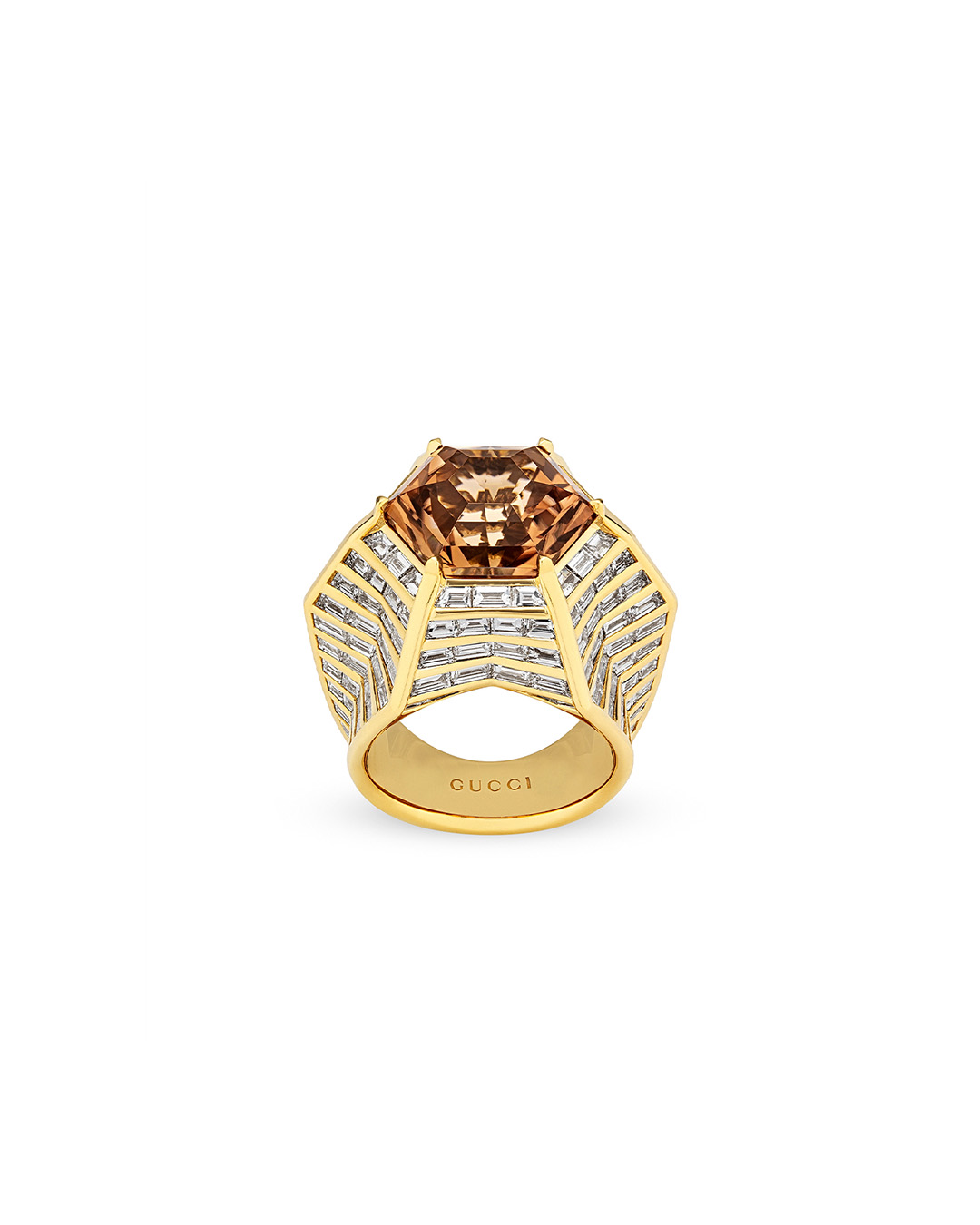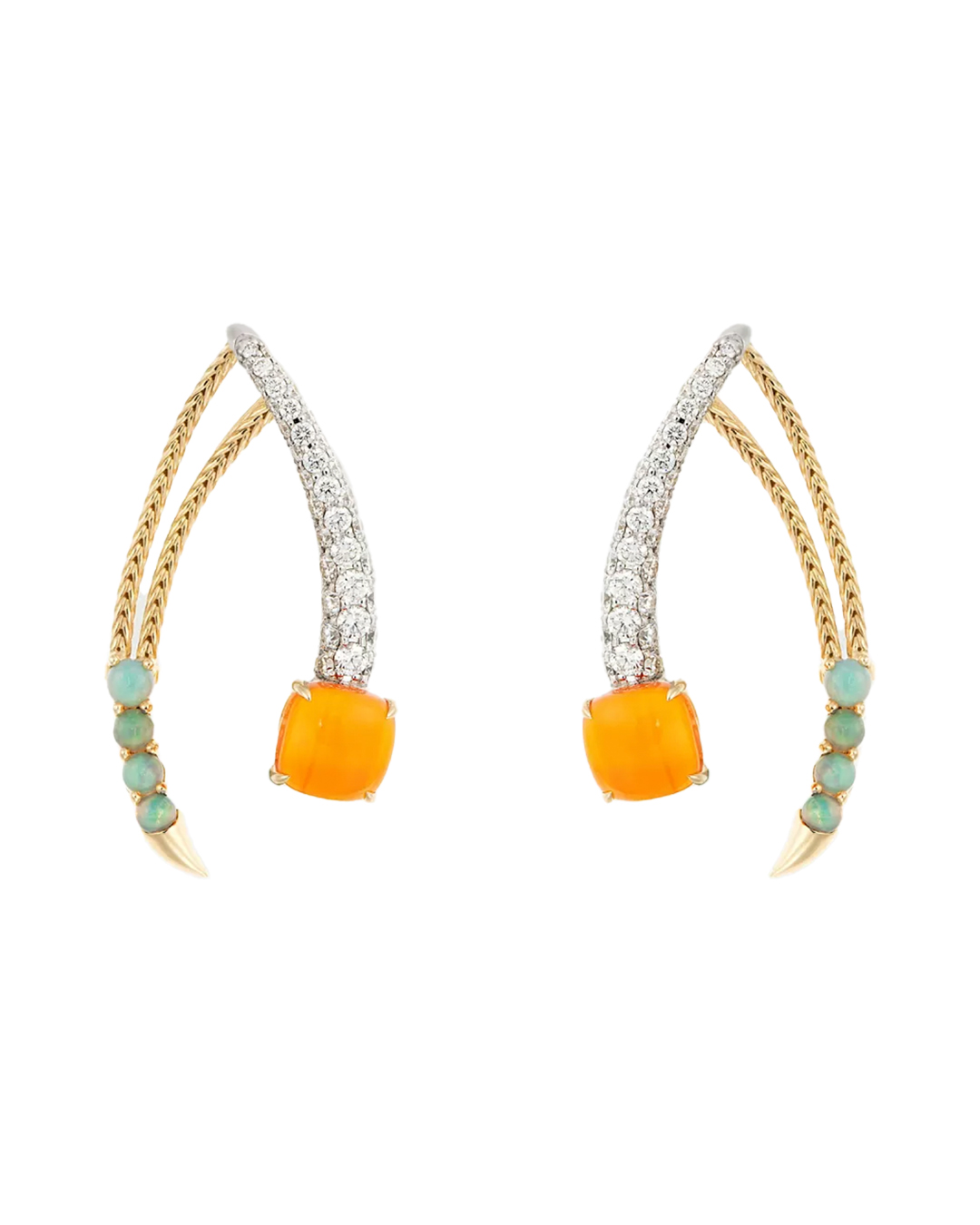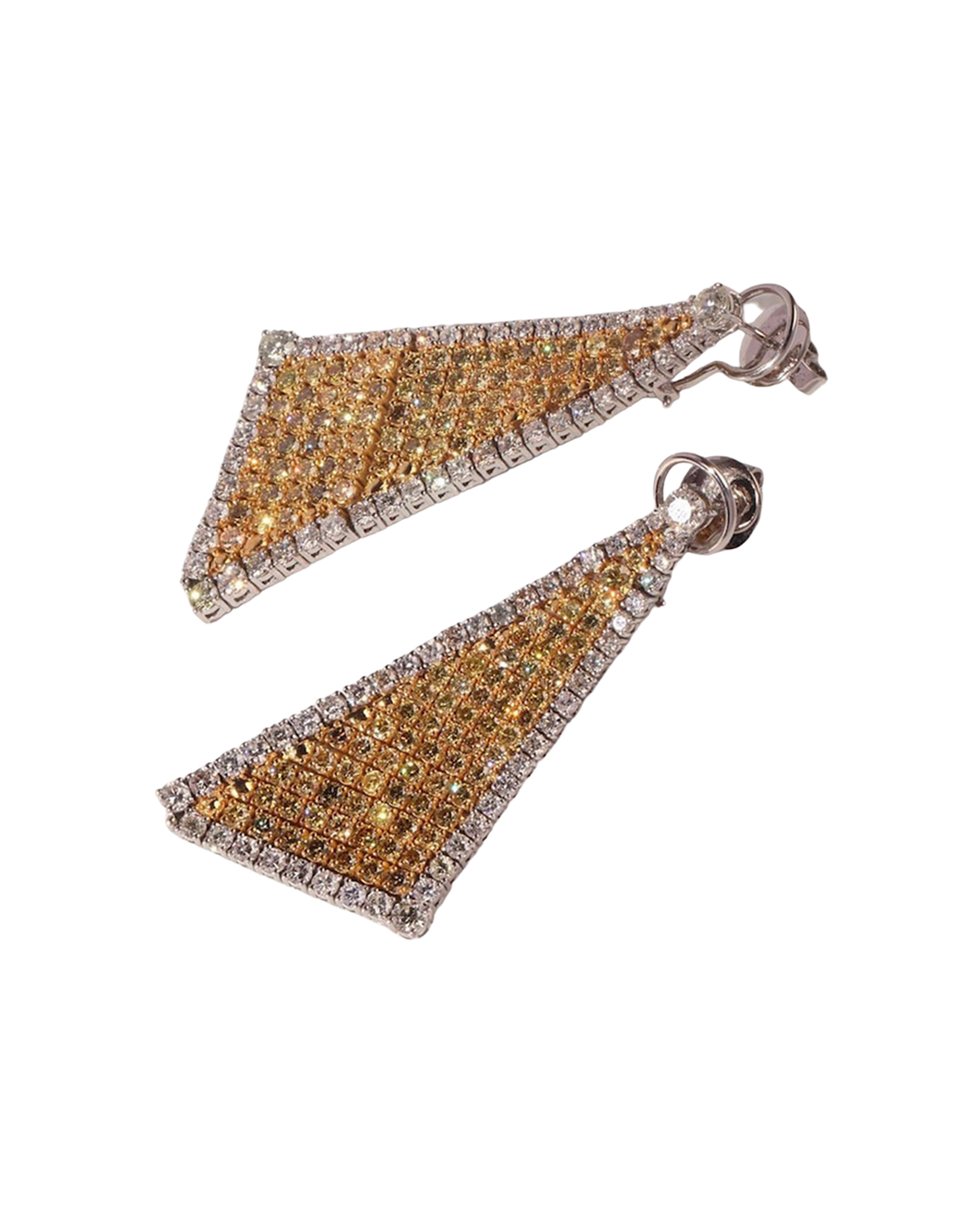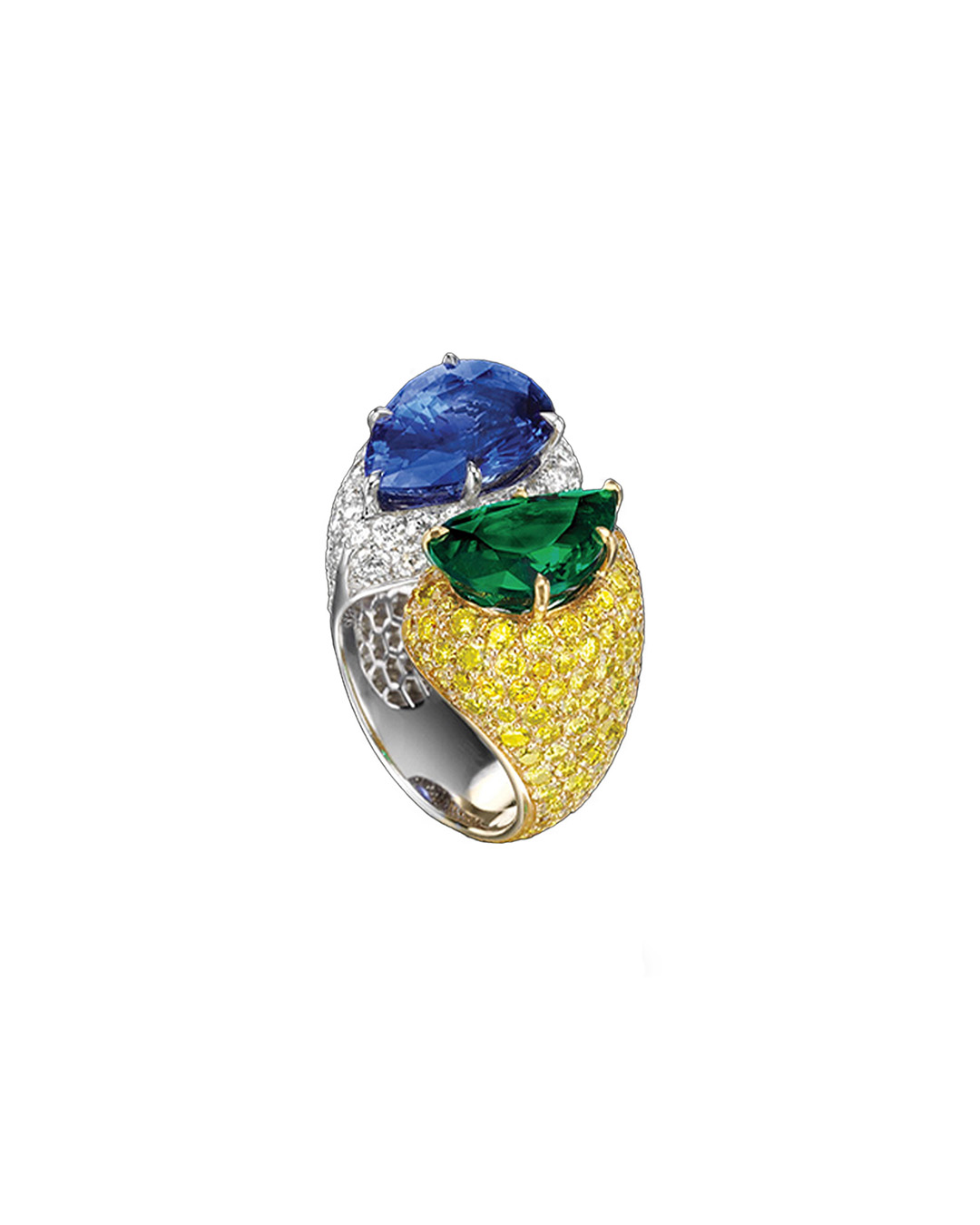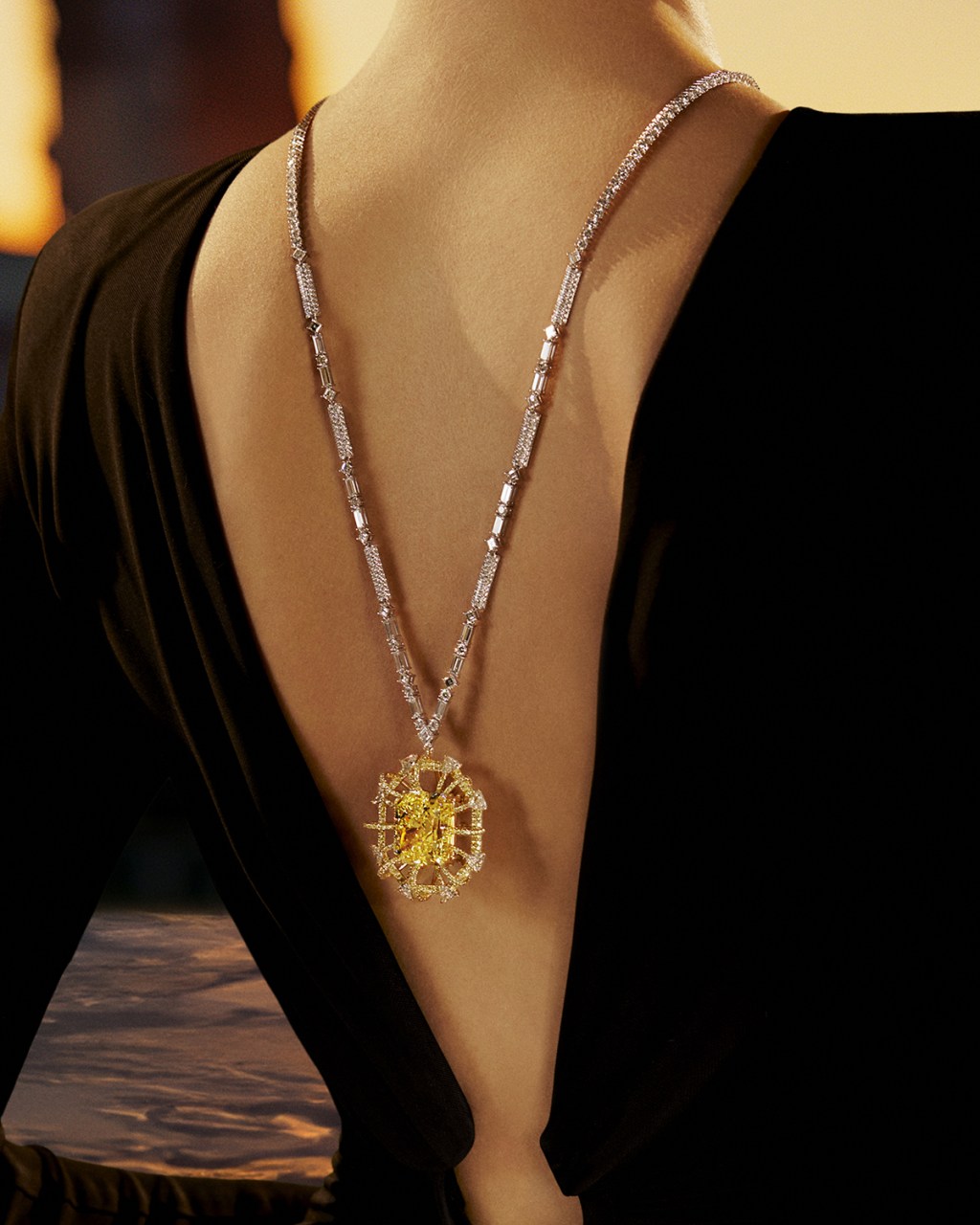Why We All Need Moodboosting Natural Diamond Jewels
Whether it’s cocktail or casual, colourful statement-making pieces have emerged as the jewellery trend for 2023
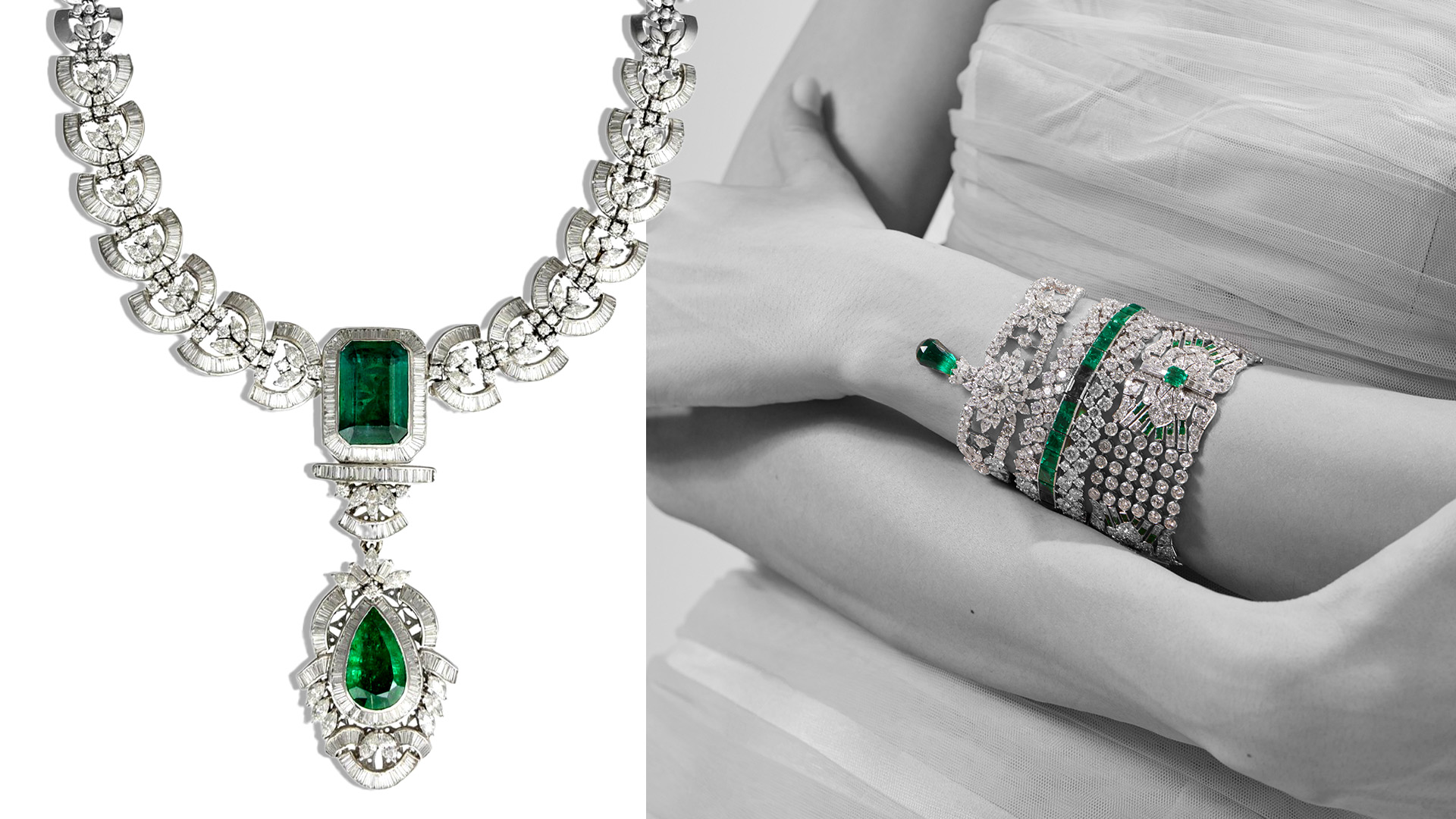
For centuries, jewellery has been far more than just adornment. It’s a vehicle of expression, a method to channel emotions. And this year, mood-boosting jewels are commanding attention.
As we navigate the present, it’s evident that we’re embracing life more expansively than ever before, disregarding rigid rules and embracing a central theme: jewellery should be deeply personal and playful. With a renewed sense of optimism post-pandemic, we find ourselves drawn to an exciting, lighthearted approach to accessorising. And what better way to capture this mood than through the spectrum of colour?
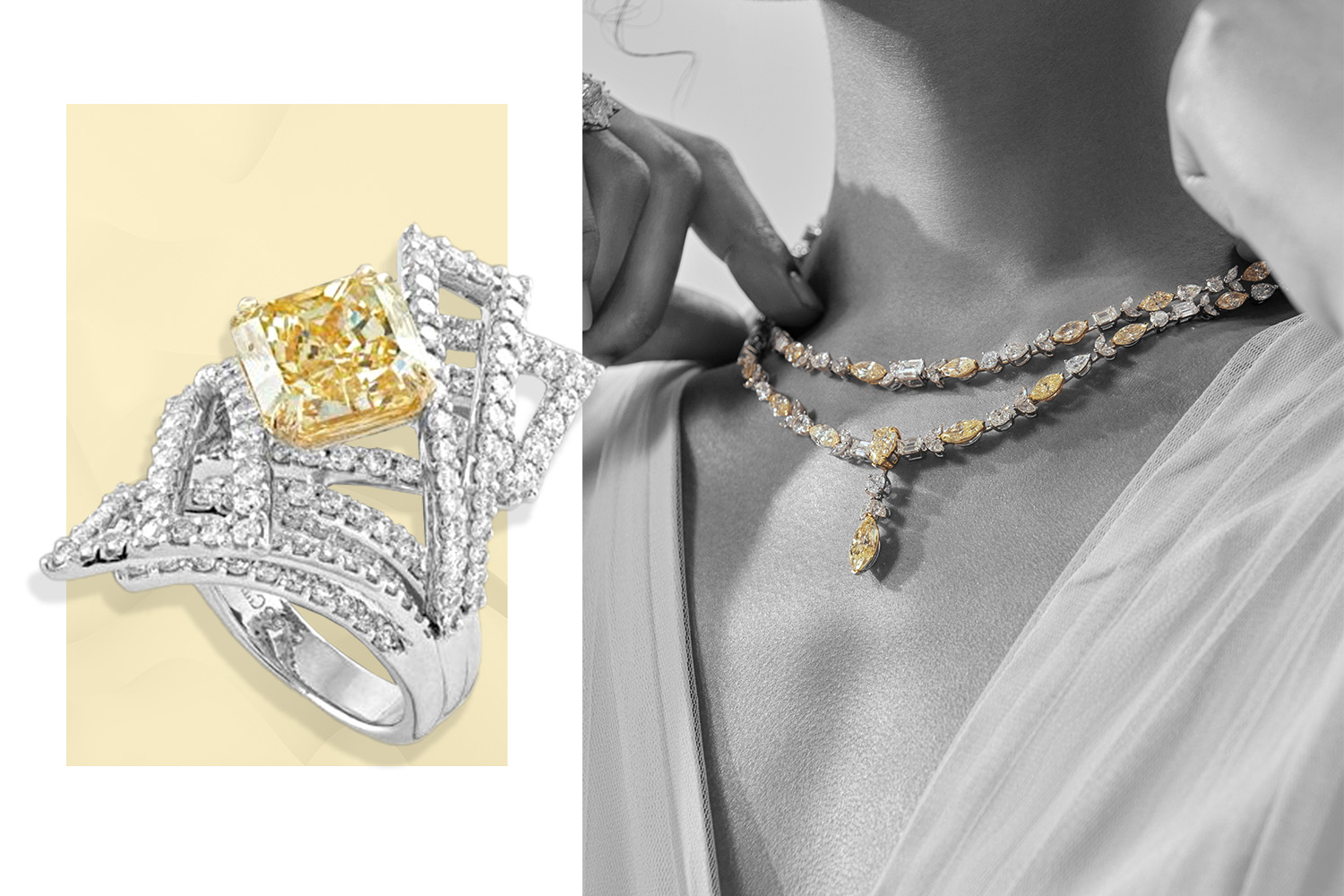
Who can forget Zendaya’s 2023 SAG awards look? While her 3D rosette Valentino dress was certainly jaw-dropping, the real hero that stole the show was her necklace from Bulgari’s high jewellery collection. A dazzling yellow gold piece with tanzanite, morganite, and aquamarine stones surrounded by spinels and pear-shaped, round brilliant-cut and pavé-set natural diamonds. The playful nature of the piece supported by the choice of colours used in design was all jewellery lovers everywhere could talk about.
“Jewellery has become a real essential part of the look that is being promoted on catwalks. Fashion shows, red carpets, celebrity performances are seeing more jewellery incorporated into their looks. So it’s a natural progression to now see jewellery being part of our everyday wardrobe and become more comfortable styling our own jewellery. We have so much inspiration.”
Jewellery expert, Katerina Perez, says
Today’s consumers enjoy unprecedented access to trends and knowledge, empowering them to take daring risks and explore the boundaries of self-expression. Experimentation and breaking free from traditional norms now take centre stage in purchase decisions, as rules become mere suggestions.
Jewellery designers are attuned to this transformative spirit. Once reserved mainly for costume pieces, the playful nature of colour has now claimed its place in the realm of fine jewellery. The harmonious coexistence of colour and white diamonds unlocks a whole new world of design possibilities.
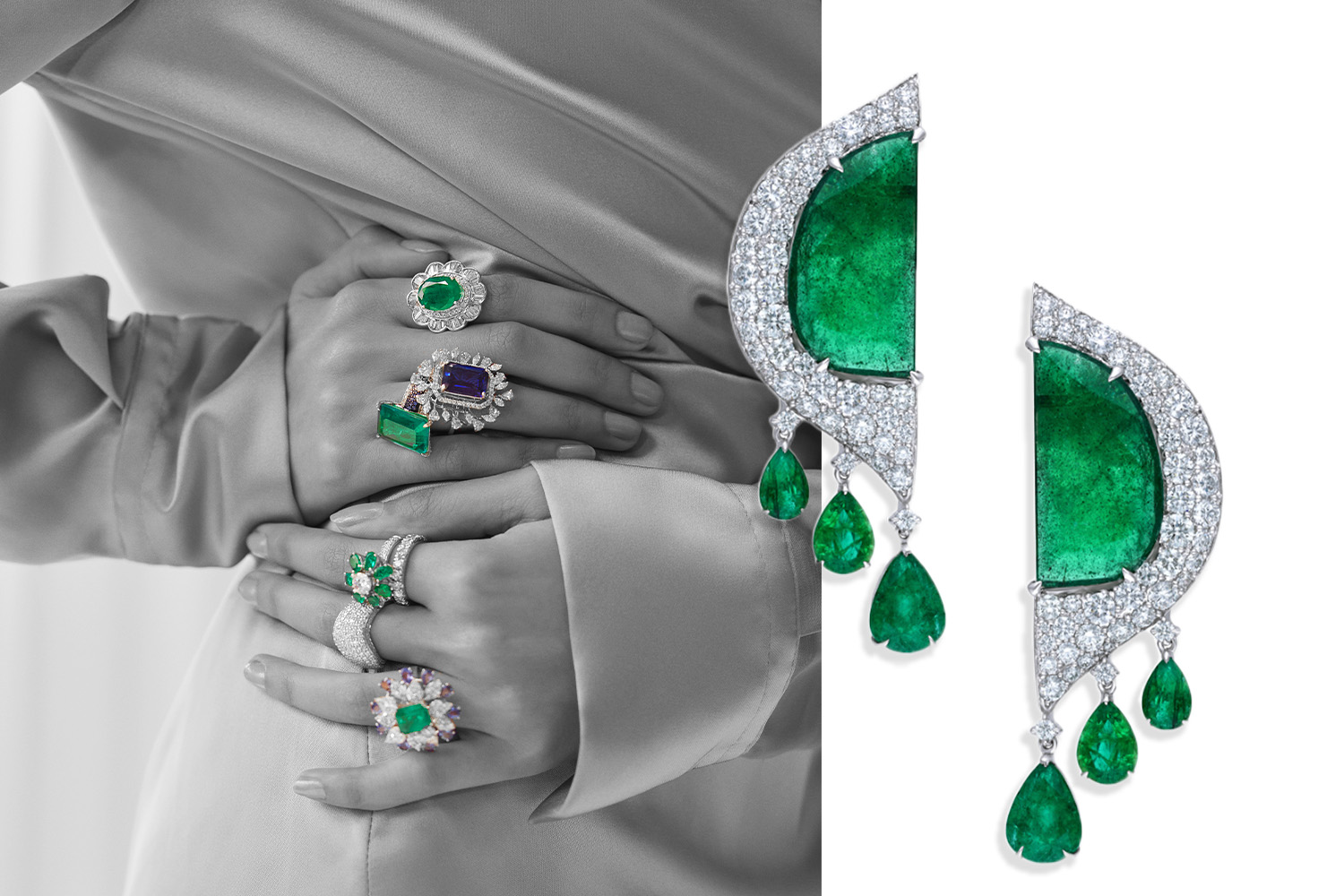
AS Motiwala Fine Jewellery, Kaj Fine Jewellery, Notandas S Sons Jewellers; Earrings: Renu Oberoi
Sajil Shah of Sajjante Jewels says, “Most stones contrast beautifully with diamonds, it also gives the wearer the flexibility to pair their piece with different clothes and looks. It adds to the jewels’ presence and importance.”
Akshat Ghiya of Tallin Jewels adds, “Design is playing a bigger role in jewellery purchases, consumers are looking for ways to express themselves through jewellery, and are looking for designed pieces that better reflect their sensibilities and aesthetics.” Coloured stones provide the variation not only through colour, but also through varying sizes and cuts and the ability to carve them, making the natural diamond centrepiece shine brighter.
But can colour in jewellery ever not be en vogue? Colour lends itself to a plethora of motifs. It adds life, depth, and volume to designs. It doesn’t matter– flora, fauna, or futuristic– colour activates our senses. In India, a country steeped in rich hues, colour holds immense cultural significance—from the vibrant orange of marigolds to the array of reds adorning brides and the beloved pink and blue cities that are dearly loved, Indians are no stranger to colour. However when it came to jewellery historically Indians have notably been more partial to colourless diamonds paired with gold.
While emeralds and rubies remain the most popular colour pairing with natural diamonds, Indian jewellery designers are experimenting with new gemstones, different hues of diamonds, and updated cuts, with colour at the focus.
“At Tallin, we enjoy mixing and pairing unusual shapes, cuts, and colours. This year we are mixing rounded, unfaceted shapes like carvings, tumbles, cabochon, and sugarloaf with sharp, angular cuts like octagons, baguettes and trillions, mixing ruby with mother of pearl, turquoise with emeralds, and tanzanite with sapphire– and we always accent our stones with diamonds,”
says Akshat.
Tarang Arora of Amrapali Jewels adds, “More people are getting used to wearing a lot more different shades and tones, particularly a lot of pastels, it allows for variety. And diamonds allow designers to diversify in how they elevate colour– I could make the same piece with pear-shaped rose cut diamonds or full cut diamonds and it would look entirely different.”
It’s a mutually-beneficial relationship, consumers are demanding something different to what they have and willing to take more risks because designers are getting more experimental with their design choices, they’re pushing the boundaries.
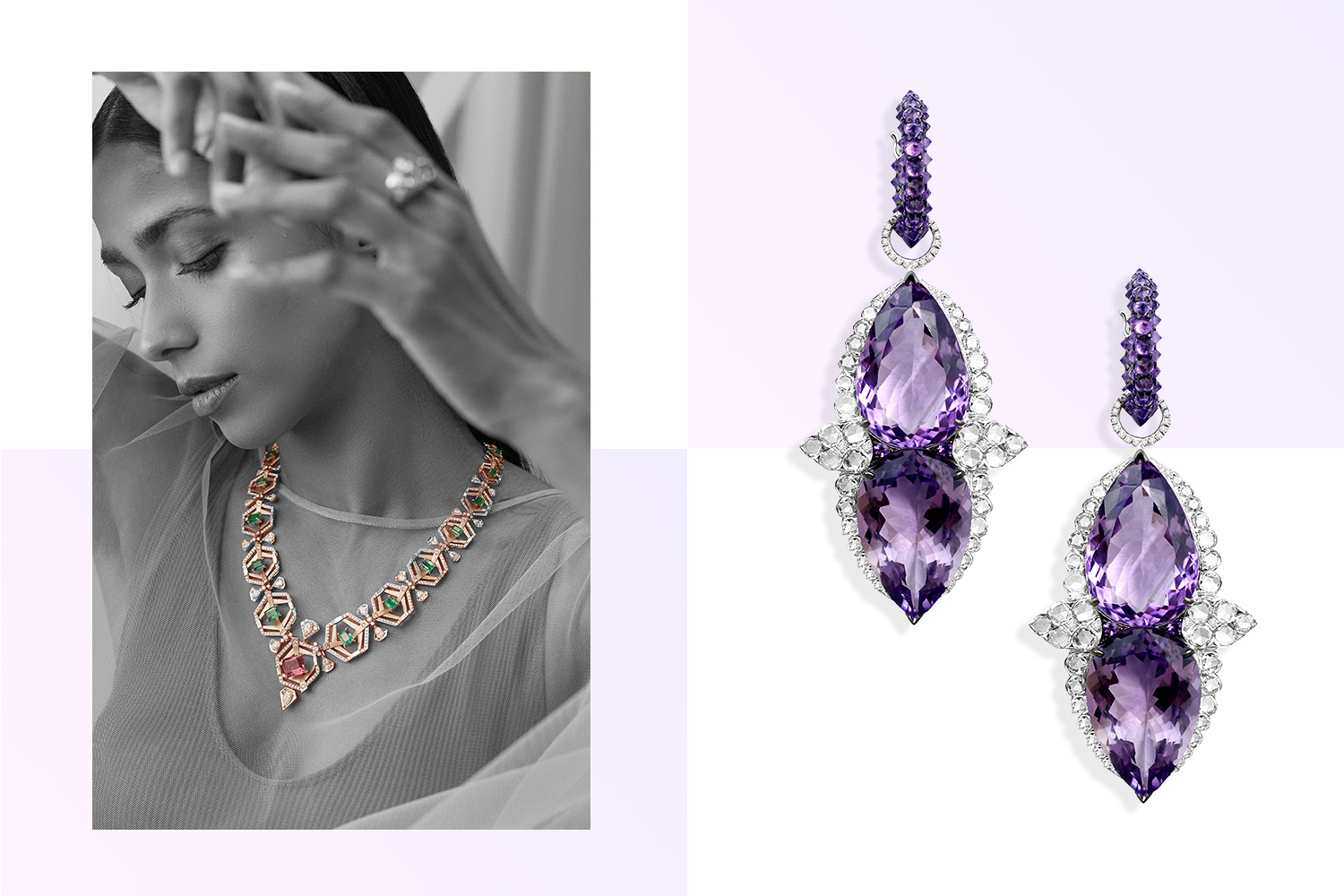
“We’re getting more courageous. It makes the pieces more artisanal and unique – it breathes life into them. We recently made our quintessential ‘Arch of Heaven’ earrings with two huge pear shaped amethysts set seamlessly together surrounded by rose cut diamonds. The colour pop certainly makes them perfect for the red carpet, but more importantly it’s just a lot of fun.”
Vishal Kothari, Creative Designer behind VAK Jewels says,
And fun seems to be the recurring theme.
Rhea Kapoor, producer and stylist to the stars, and the mastermind behind fashion icon sister, Sonam Kapoor’s looks, feels it’s more about how you wear your pieces and what the pieces say about you, “Jewellery isn’t about telling people how precious it is anymore. It should be about you enjoying it. That’s what I see with the younger generation. For them, playing with jewellery and colour has become more about presenting a new perspective rather than showing wealth, showing a sense of uniqueness, a sense of personalisation.”
“Some of the most interesting colour combinations I’ve been seeing, and a colour that has been catching on is blue with diamonds, especially for the Indian market.”
says Tarang.
Vishal echoes a similar sentiment, “VAK has recently started pairing beautiful aquamarines with natural rose cut diamonds.”
“We’ve been deprived of blue because we don’t believe in wearing sapphires, or we need to be told by a priest on how to wear a sapphire,” says Tarang. This has resulted in tanzanite becoming an important and very acceptable substitute. “It’s made enough of a mark for clients to ask for tanzanite– we’re definitely going to be seeing blue on the rise in the coming years.”
But whatever the colour, one thing is clear– colour in all its glory is on the rise. So whether you’re into earthy tones or sorbet shades, colour is sure to make its way into your jewellery box this year.
